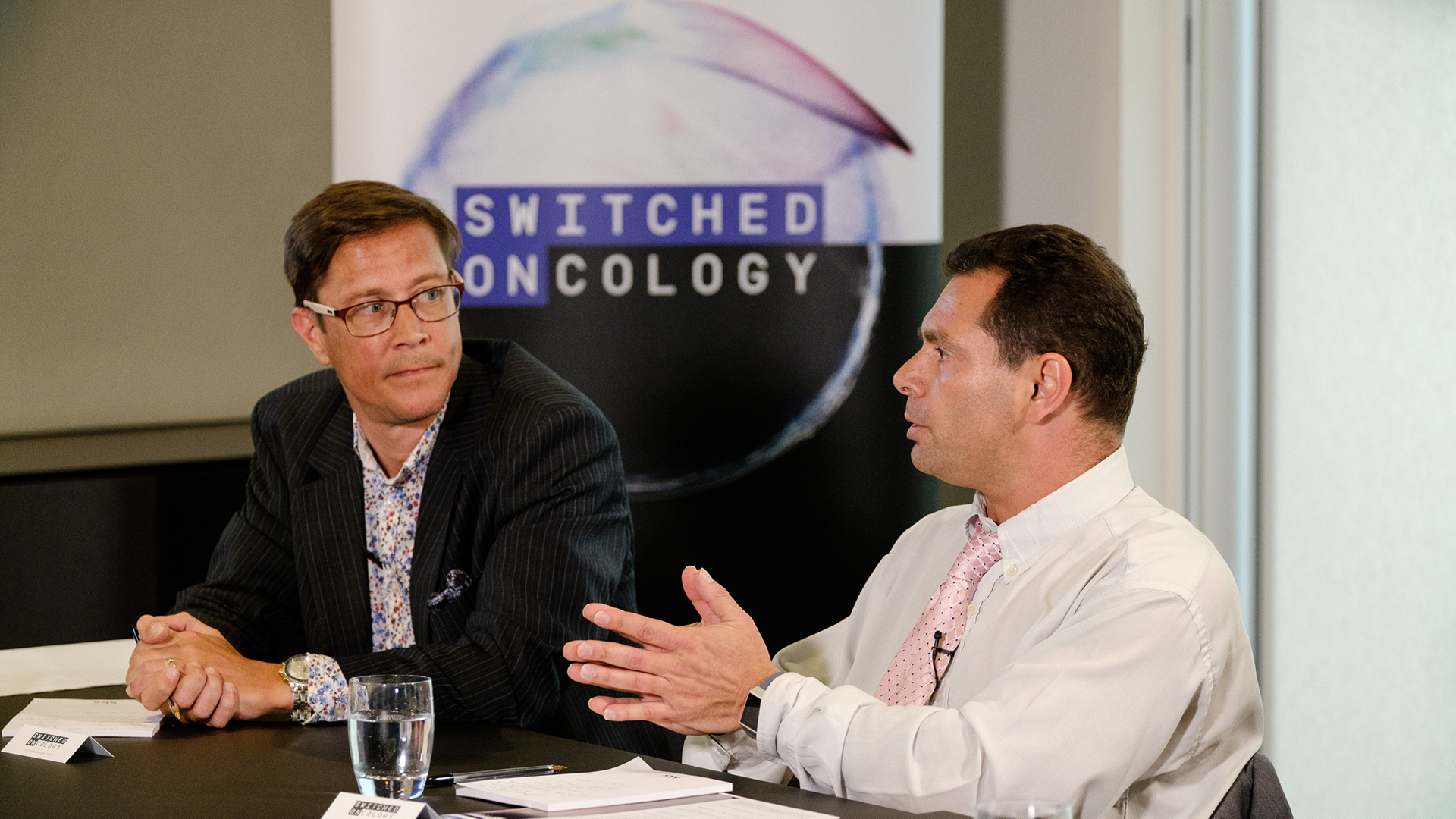1st May 2018
BlogAttendees
Dr Jack Kreindler, BSc, MBBS, Doctor, Med Tech Entrepreneur, Speaker and academic faculty chair, SWITCHED ONcology
Dr Andy Gaya BSc, MD, MRCP, MBBS, FRCR, Consultant Clinical Oncologist
Dr Shamil Chandaria, PhD, Strategic Advisor, Google DeepMind
Dr Stephanie Kuku MD, Senior Surgical Fellow, The Royal Marsden NHS Foundation Trust
Holly Dempsey RD, Dietetic Professional Lead for Berkshire Macmillan Cancer Rehabilitation Service
Dr Vernon Bainton, MBChB, BMedSci, Chief Medical Officer, Havas Lynx Group
Dr Ben Harman-Jones, MBChB, Medical Advisor, Havas Lynx Group
Cancer in The Information Age: are we illuminated or inundated?
Written by Ben Pounds, Medical Writer and Executive Faculty Member of Switched Oncology
The term ‘cancer’ is deceptively simple. The American Association for Cancer Research defines it not as a singular concept, but a collection of more than 200 diseases. Effective treatments for these diseases are currently being explored in more than 20,000 open and active studies registered on ClinicalTrials.gov, 2,000 of which are immuno-oncology-specific trials.
These are all trials of new and existing treatments, either as monotherapies or combinations, across a variety of modalities, formulations and pharmacologies. Fed by this information and data, the oncology sphere is swelling in complexity. We are now on the crest of a new wave in cancer care. One that is rapidly gaining momentum and that carries with it inevitable change.
But with change comes both challenges and opportunities. Havas Lynx’s SWITCHED ONcology initiative invited healthcare leaders to share their perspectives on the challenges facing oncology, and discuss what this means for communication in the clinic and beyond.
A data epidemic
Cancer has spread far from the traditional oncologist’s microscope. Today it’s as much, if not more, about genomics, immune profiling and systems biology as it is about histopathology. Experts from all corners of medicine are exploring cancer, producing data to drive understanding and advance. Their evidence generation is complemented by the rise of wearable tech – now patients and the public are contributing an entirely new insight stream. But such a scenario has created a paradox: in our pursuit of understanding, we are unwittingly breeding complexity. The key now is to bring this complexity into focus, so that we can answer the questions that healthcare professionals (HCPs), patients and caregivers are asking.
This raises a provocative question: is cancer becoming too complicated, too interconnected, for human understanding alone? Perhaps a controversial question, but an important one, because one unanimous theme of discussion was that HCPs need support. The answer may lie in the processing power of computation. Specifically, the application of computational biology and machine learning to digest, structure and filter data into more accessible outputs. Supported by the right technology, doctors could digest data more efficiently and communicate it more effectively with patients. They and their caregivers could benefit from the same technology to become more activated and more informed in conversations with HCPs. Enabling more constructive and shared dialogue in this way could have a substantial and positive impact on outcomes.
Personalised vs personal medicine
Data and information have already proved fruitful in the clinic, yielding the advent of personalised cancer medicine, an approach whereby a patient’s tumour is profiled and the data is then used to select a treatment most suited to the aberrations
detected. Such an approach can maximise response rate and minimise debilitating side effects. But for all the promise of
personalised medicine, it can limit perspective, drawing clinical attention towards the nuances of tumour genetics and away from the bigger picture. It can make it easier to forget we’re treating people, not just tumours. As oncology moves away from an anatomical approach to tumour classification towards a more genomic model, cancers become more individualised. Patients lose the solidarity of whole communities sharing stories about ‘my tumour’. They lose ‘The Wisdom of Crowds’.
Put simply, personalised cancer care alone is not enough; it must be personal. We should aim higher than giving patients what they need, and prioritise what they want. But to do this, communication is crucial. A shining example is MoovCare, a web-based application through which patients report their own symptoms of lung cancer to enable earlier detection of relapse and provision of appropriate care sooner. The result? A seven-month survival benefit vs standard follow-up care. That’s the power of communication, and innovation, in clinical practice.
A model of inefficiency
It’s not that patients and healthcare professionals aren’t communicating effectively, it’s that they can’t, in today’s inefficient model of healthcare. Oncologists are inundated with more patients than ever and are spending less time with each. At times, some HCPs feel less like conveyors of care and more like conveyor-belt operatives. This is at a time when oncology is rife with innovation and transition, when communication is at its most critical. Change has never been more pressing. It needs you to discuss cancer care with your friends, your loved ones, your neighbour on tomorrow’s commute, and they must do the same. From the ground up, we can communicate with policymakers and decision-makers to ensure data, outcomes and interactions are all as meaningful as they can be. Only then can we deliver care as transformational as the future of oncology.
